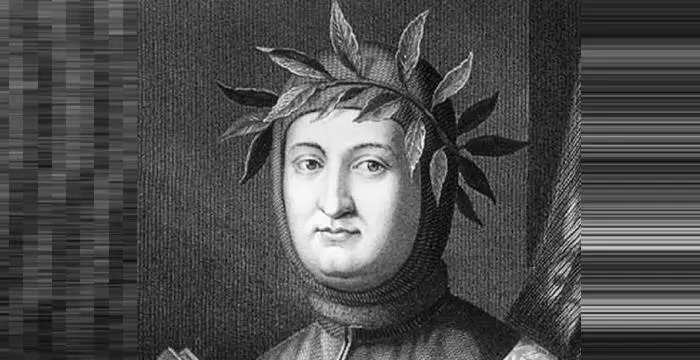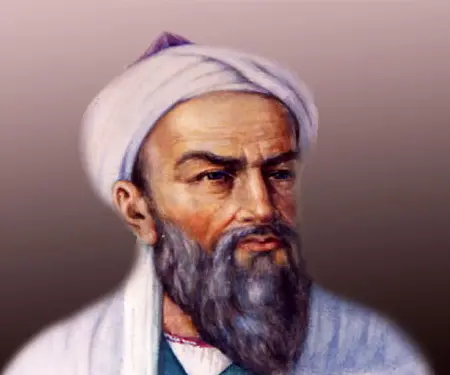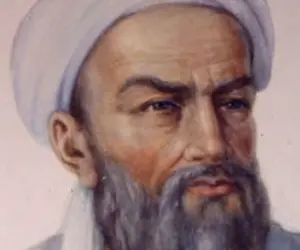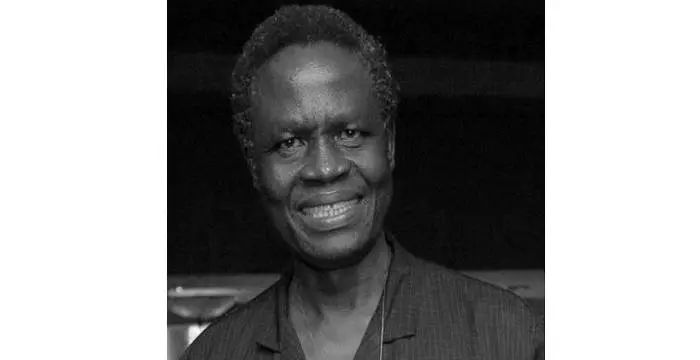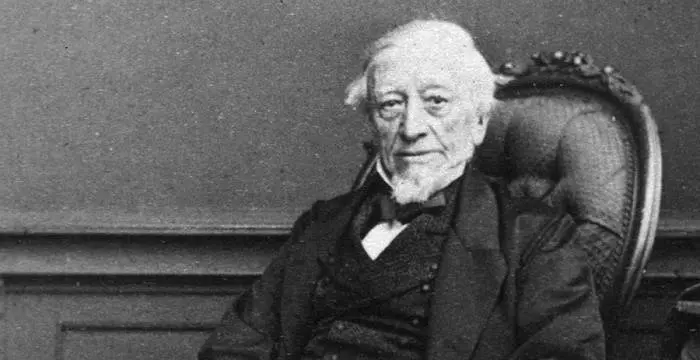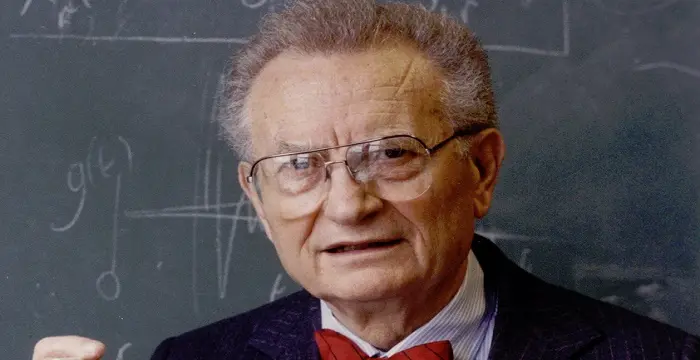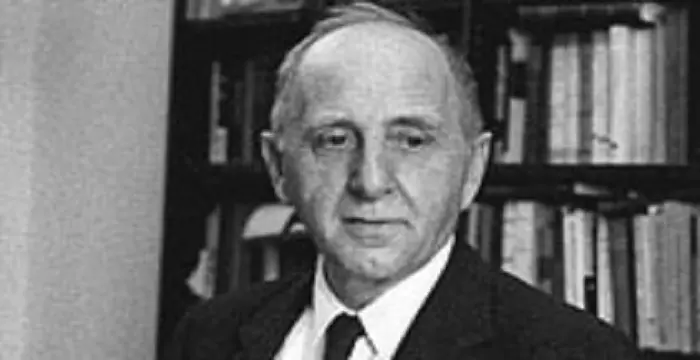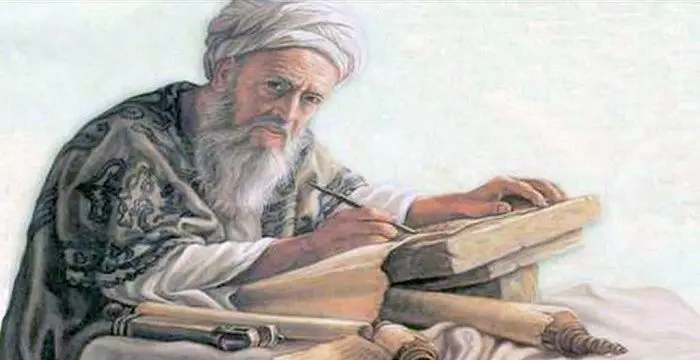
Abū Rayḥān al-Bīrūnī - Scholar, Birthday and Childhood
Abū Rayḥān al-Bīrūnī's Personal Details
Abu Rayhan al-Biruni is esteemed as one among the supreme scholar belonging to medieval Persia
| Information | Detail |
|---|---|
| Birthday | September 5, 973 |
| Died on | December 13, 1048 |
| Nationality | Iranian |
| Famous | Intellectuals & Academics, Academics, Iranian Intellectuals, Scholar |
| Nick names | Al-Biruni |
| Known as | Abū Rayḥān Muḥammad ibn Aḥmad Al-Bīrūnī |
| Birth Place | Khwarezm |
| Religion | Islam, Shia Islam |
| Gender | Male |
| Father | Ahmad Al-Biruni |
| Sun Sign | Virgo |
| Born in | Khwarezm |
| Famous as | Scholar |
| Died at Age | 75 |
// Famous Scholar
Francesco Petrarch
Fêted as the “Father of Humanism”, Francesco Petrarch is one of the most influential literary figures the world has ever had. Explore this biography to know about his childhood, life and timeline.
Anna Comnena
Anna Comnena was the Greek princess and scholar who wrote the ‘Alexiad’. This biography of Anna Julia Cooper provides detailed information about her childhood, life, achievements, works & timeline.
Maulana Abul Kalam Azad
Maulana Abul Kalam Azad was prominent leader who contributed actively in the Indian freedom struggle.
Abū Rayḥān al-Bīrūnī's photo
Who is Abū Rayḥān al-Bīrūnī?
Abu Rayhan al-Biruni was one of the finest scholars the world has ever produced. He has made immense contribution to the world of science, geography, astronomy, physics and many other fields. His works, along with those of other great scientists, have established the grounds of modern science. Even though he lived in the medieval times, his speculations and observations hold good till date. He formulated many mathematical solutions to unsolved problems and even determined the latitudes and longitudes of many regions through his keen observation. He devised a few instruments to help determine certain values such as the radius of earth and the specific gravity of metals. He also had vast knowledge about the culture, customs, literature and religions of different places around the world, since he travelled to various regions along with his patrons. This helped him to write volumes about the places he visited, especially India. These books can be regarded as encyclopaedias about the places, and these are a manifestation of his observant quality, as these books contain minute descriptions of the topics he has dealt with. He was, however, against horary astronomy and considered it to be a kind of conjuring. This scholar was one who thought much ahead of his time and as such is one of the few scholars who have been revived by the Soviet science historians.
// Famous Academics
David Suzuki
David Suzuki is a Canadian academic and science broadcaster. This biography gives detailed information about his childhood, career, personal life and timeline.
Ayodele Awojobi
Ayodele Awojobi was a Nigerian educator, author, inventor, and political activist. This biography of Ayodele Awojobi provides detailed information about his childhood, life, achievements, works & timeline
Peter Mark Roget
Peter Mark Roget was an English physician and philologist who is most celebrated for 'Roget's Thesaurus of English Words and Phrases'.
Childhood & Early Life
Al-Biruni was born in the year 973, in the Khwarezm region of Khorasan, which is in present day Uzbekistan. Otherwise, much is not known about his childhood and family.
The region was ruled by the Khwarezm-Shah Dynasty at that time and one of its princes named Abu Nasr Mansur ibn Iraq, taught Abu Rayhan al-Biruni.
One of the Khwarezm-Shahs was murdered by his servant, which resulted in a civil war. This made Al-Biruni lose sponsorship from the Khwarezm-Shahs and he then went to the Samanid Dynasty and found shelter in Bukhara, the capital of Samanid.
Possibly, the Samanids also helped the overthrown prince Qabus ibn Voshmgir, and this helped al-Biruni get acquainted with this prince. In Voshmgir’s court, al-Biruni encountered Ibn Sina, thinker and researcher from Iran.
He had amassed knowledge on varied topics such as history, geography, mathematics, philosophy, grammar, astronomy, science and Islamic law. He even learnt Greek, Syrian and possibly Sanskrit too, apart from Arabic and Persian.
Career
During his teenage, Al-Biruni had gained much knowledge on science and by the end of the tenth century he had calculated the latitude of the city of Kath.
He had written many works during the tenth century but most of them have gone missing. However, the one which is surviving till date is his speculation on map projections called ‘Cartography’. The work also contained theories of map projections by other scholars from which he had gained knowledge.
In the later part of the tenth century, political turbulence began in the Islamic regions, and his patron the Samanids were overthrown by the Mahmud of Ghazna. Al-Biruni was then taken in the court of Mahmud, including many other scholars, and was appointed the court soothsayer. He then, travelled to India along with Mahmud during its attack.
It is also believed that Abu Rayhan gained some knowledge of Sanskrit during that time and also penned his work named ‘Kitab al-Hind’.
His contribution towards science includes his findings of seven different ways to determine the north and south direction. He also found out a mathematical system to pinpoint the beginning of seasons.
In his work ‘Al-Qanun al-Mas udi’ (The Mas udic Canon), he put together all the scientific knowledge he had gained from his readings and observations, including Egyptian astronomer and mathematician Ptolemy’s works.
In this book he even innovate algebraic systems to solve third-degree equations. He dedicated this book to Mas ud, the son of the Mahmud of Ghazna.
Al-Biruni penned his work named ‘Kitab Al-Tafhim li-awa il sina at al-tanjim’ (Elements of Astrology) is till date the most wide-ranging dealing of the subject. Biruni thought astrology to be a significant instrument for imparting mathematical and astronomical knowledge and his more than half of his book comprised of teaching astronomy, mathematics, geography and chronology.
He wrote ‘Tahdid nihayat al-amakin li tashih masafat al-masakin’ (Determination of the Coordinates of Places for the Correction of Distance Between Cities), which became a well acclaimed work related to mathematical geography. This book advocates mathematical sciences as well as discusses the ways in which longitudes and latitudes are determined.
In the same book, he also found out the direction of Mecca in relation to the local horizon of Ghazna, which had been a religious requirement, more than a mathematical one.
His other works include ‘Al-jamahir fi ma rifat al-jawahir’ (Gems), ‘Ifrad al-maqal fi amr al-zilal’ (The Exhaustive Treatise on Shadows), ‘Kitab al-saydanah’ (Pharmacology) and ‘Maqalid ilm al-hay ah’ (Keys to Astronomy). These works are less in volume but do not lack content. They encompass particular subjects each of which have been discussed in detail.
He contributed to the field of geography by formulating a method of finding out the earth’s radius with the help of the height of mountains. He conducted this experiment at a place which is presently in Pakistan.
He also invented a gadget with which he could find out almost the exact specific gravity of a few minerals and metals.
Major Works
One of his encyclopaedic works is the ‘Tahqiq ma li-l-hind min maqulah maqbulah fi al-aql aw mardhulah’ (Verifying All That the Indians Recount, the Reasonable and the Unreasonable). As the title suggests, it encompasses all the knowledge that al-Biruni had gained about India as a whole like its culture, literature, customs, rituals, religion and science.
Another encyclopaedic work of his which needs to be mentioned is ‘Al-Athar al-baqiyyah an al-qurun al-khaliyyah’ (The Chronology of Ancient Nations). He dedicated this book to Prince Qabus. This book includes details about different cultures around the world.
Personal Life & Legacy
He was neither involved nor interested in horary astrology and even judged this branch of astrology as witchcraft.
This great scholar breathed his last in the mid-1050s in the Ghazna region, which is presently known as Ghazni, Afghanistan.
A crater on the moon has been christened ‘Al-Biruni’, as a mark of tribute to this great scholar.
In 2009, Iran offered the United Nations a Rotunda, which has sculptures of four Iranian scholars, one of which is that of Abu Rayhan al-Biruni.
This great scholar of the medieval era passed away in the year 1048, at the Ghazni province, which belongs to the modern day Afghanistan.
Trivia
The town where he was born is now named Biruni, in honour of this great scholar.
Abū Rayḥān al-Bīrūnī biography timelines
- // 1048This great scholar of the medieval era passed away in the year 1048, at the Ghazni province, which belongs to the modern day Afghanistan.
- // 2009In 2009, Iran offered the United Nations a Rotunda, which has sculptures of four Iranian scholars, one of which is that of Abu Rayhan al-Biruni.
// Famous Intellectuals & Academics
Bertil Gotthard Ohlin
Bertil Gotthard Ohlin was a famous Swedish economist. This biography profiles his childhood, family life & achievements.
Emily Greene Balch
Emily Greene Balch was an American economist, sociologist and pacifist who won the 1946 Nobel Peace Prize. This biography of Emily Greene Balch provides detailed information about her childhood, life, achievements, works & timeline.
Martin Buber
One of the greatest philosophers to have ever walked on earth, Martin Buber contributions to philosophy is a long-standing one. Explore all about his profile, childhood, life and timeline here.
Paul Samuelson
Nobel laureate Paul Anthony Samuelson is referred to as the ‘Father of Modern Economics’. This biography profiles his childhood, life, career, achievements and interesting facts about him.
Lao Tzu (Laozi)
Lao Tzu was a legendary Chinese philosopher who wrote the important “Daodejing”. This biography profiles his childhood, life, career, achievements and timeline.
Simon Kuznets
Simon Kuznets was a noted Russian-American economist, statistician, demographer, and economic historian. Check out this biography to know about his childhood, family life, achievements and other facts related to his life.
Abū Rayḥān al-Bīrūnī's FAQ
What is Abū Rayḥān al-Bīrūnī birthday?
Abū Rayḥān al-Bīrūnī was born at 0973-09-05
When was Abū Rayḥān al-Bīrūnī died?
Abū Rayḥān al-Bīrūnī was died at 1048-12-13
Where was Abū Rayḥān al-Bīrūnī died?
Abū Rayḥān al-Bīrūnī was died in Ghazni
Which age was Abū Rayḥān al-Bīrūnī died?
Abū Rayḥān al-Bīrūnī was died at age 75
Where is Abū Rayḥān al-Bīrūnī's birth place?
Abū Rayḥān al-Bīrūnī was born in Khwarezm
What is Abū Rayḥān al-Bīrūnī nationalities?
Abū Rayḥān al-Bīrūnī's nationalities is Iranian
What is Abū Rayḥān al-Bīrūnī nick names?
Abū Rayḥān al-Bīrūnī's nickNames is Al-Biruni
What is Abū Rayḥān al-Bīrūnī's religion?
Abū Rayḥān al-Bīrūnī's religion is Islam, Shia Islam
Who is Abū Rayḥān al-Bīrūnī's father?
Abū Rayḥān al-Bīrūnī's father is Ahmad Al-Biruni
What is Abū Rayḥān al-Bīrūnī's sun sign?
Abū Rayḥān al-Bīrūnī is Virgo
How famous is Abū Rayḥān al-Bīrūnī?
Abū Rayḥān al-Bīrūnī is famouse as Scholar
